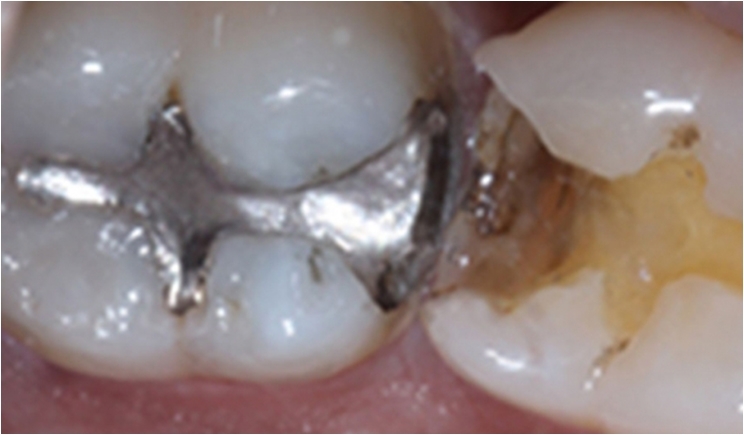
It’s an age-old question: Should you spend the time and energy doing a job yourself or hire someone to complete it for you? Maybe it’s something you’ve contemplated when debating to paint the house or shovel the driveway.
And now that dentists across the country are required to install amalgam separators in an effort to reduce the amount of mercury that ends up in the environment, it’s a question you’ll be asking again: Should you personally operate and maintain the equipment or employ a waste management company to do the job for you?
It’s a mistake to view amalgam separators as just a commodity. Dental offices are now federally mandated to monitor the equipment and recycle collected metals, so compliance goes far beyond simply purchasing the technology.
In many ways, partnering with a dental waste management company isn’t unlike choosing insurance for your practice. You were likely very careful to select an insurance company that would give you the best service while reducing risks at a reasonable price. Similarly, directly interacting with a knowledgeable and reliable waste management service will put your mind at ease by saving your practice the cost of noncompliance.
Wait, I’m Required to Install Amalgam Separators?
If the news comes as a surprise to you (or if you need a refresher), here’s what’s going on. On July 14, 2017, the federal Environmental Protection Agency (EPA) passed a regulation that requires most dental offices to collect and properly recycle metal waste, including mercury, using amalgam separator technology.
The EPA estimates that compliance with this ruling will reduce the amount of mercury that ends up in municipal sewage treatment plants, and in turn the environment, by as much as 5.1 tons. While new dental practices are required to adopt the standards immediately, existing offices have until July 14, 2020, to install the technology.
Great—So I Can Wait Until 2020 to Deal With This?
Technically, yes. But if you’re looking to save your practice some money (and who isn’t?), it’s a smart idea to start shopping around now. Before the EPA’s regulation was passed, some states already had similar requirements in place. What we learned from those examples is that when dental practices waited until the deadline to purchase amalgam separator technology, they were charged a premium. Being an early adopter, however, can reduce costs.
Keep in mind that you’ll want to do your homework before purchasing the equipment. Your new amalgam separator must meet EPA requirements. For example, it needs to have at least 95% removal efficiency. And when it comes to installation, it’s important to take both plumbing configuration and space into account. The equipment should be placed in a spot that is accessible for future maintenance and replacement.
Am I All Set Once the Technology Is Installed?
Maintenance is the most time-consuming part of the process, especially now that the EPA’s new regulations are in place. Once your amalgam separator is installed, it will need to be monitored according to the manufacturer’s recommendations. The EPA also recommends inspecting the technology monthly.
If the equipment is not operating properly, the new regulations give dental practices 10 business days to replace or repair it. Additionally, offices will be required to properly recycle waste. This includes replacing the amalgam separator canister, retaining cartridge, or units annually or as directed by the manufacturer, whichever comes first.
What If We Forget to Monitor the Technology?
Staying on top of the maintenance process will keep your practice in the clear in the event that you’re inspected. Now that proper waste disposal is federally regulated, it’s likely to be more thoroughly enforced than it has been in the past. But it’s true that the maintenance process does put a great deal of responsibility on you and your employees, and it’s easy for regular monitoring to slip through the cracks when work becomes hectic.
This is where a dental waste management service can help. Establishing a direct relationship with a company will save you time, as well as a headache if anything does go wrong, while setting your practice up for success for years to come. In fact, in the Federal Register, the EPA encourages dental practices to partner with a waste management service, since the outside help can facilitate compliance with the new ruling.
These waste management companies take a number of tasks off of your to-do list by installing the technology, ensuring that it is in working order and up to date, documenting inspections, and staying on top of transporting and recycling the waste. And when these burdens don’t fall on you or your staff, you’ll all have more time to focus on what really matters—your patients.
Mr. Sussman is the founder, president, and CEO of Dental Recycling North America. He’s also the founder, president, and CEO of Dental Recycling International, which was created to operate in all markets outside the US. Some of the most renowned dental clinics in the United States, including the US Air Force Academy, the Cleveland Clinic, and the University of Colorado Dental School, have sought out DRNA’s 360° compliance solution for amalgam recycling requirements. He can be reached at mmsussman@drna.com.
Disclosure: Marc S. Sussman is the founder, president, and CEO of Dental Recycling North America and founder, president, and CEO of Dental Recycling International.
Related Articles
What Every Dentist Needs to Know About the New Amalgam Regulations
EPA Issues Final Rule Requiring Amalgam Separators
Conference Discusses the Future of Dental Amalgam











